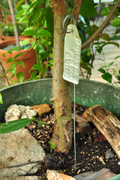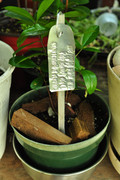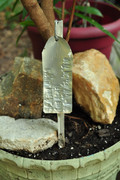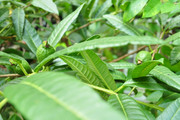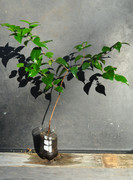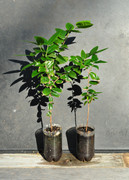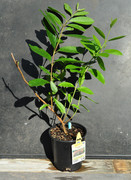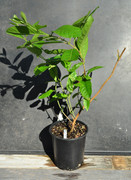My plant sale last month went well, so I am selling off a few more of my extra plants. Some of these are relatively common plants, others are a little harder to find. With the exception of some Osmocote fertilizer, these plants have been grown organically. Some of the plants do not look perfect but all are healthy. Some of these plants are root-bound and need to be up-potted, which you should probably do once they become acclimated to your growing area.
These plants have all been grown in a partly sunny location. They should be introduced to full sun conditions gradually to prevent any leaf burn or other damage.
These plants will be shipped using USPS Priority Mail with the shipping costs based on the size, weight, number of plants ordered, and buyer location. I will do what I can to save you money on shipping costs by making these plants as compact as possible for shipping without damaging them. They will not be shipped bare root; they will be shipped in their container with potting soil, as pictured (unless otherwise stated). I do not ship internationally. Buyers in California, Arizona, and Hawaii purchase plants at your own risk; I am not responsible if they are confiscated.
I securely pack all my plants. Ask TnTrobbie about his
Plinia rivulariss miraculous survival after being lost by the US Postal Service for three weeks.
Payment through PayPal.
Feel free to contact me with any questions you might have.
Scientific Name (Common Name) Number of Seedlings Available Seedling Size (Pot Height Not Included) Seedling Age Price Per Plant
Also included is where I purchased the seeds.
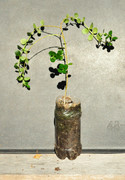
Carissa macrocarpa (Natal Plum) 1 12 tall 2 years $10 SOLDPurchased from Trade Winds Fruit. Plant is leggy from being grown in too much shade and will need to be staked up until that abates.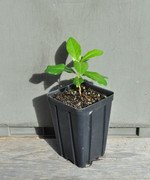 Diospyros inconstans
Diospyros inconstans (Marmelinho)
1 3 tall under 1 year $35
Purchased from a fellow Tropical Fruit Forum member.
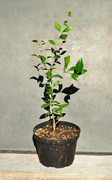
Eugenia repanda (Pitanga-Jambo) 1 15 tall 2 years $55 SOLDPurchased from Trade Winds Fruit.
Garcinia hombroniana (Seashore Mangosteen) 1 4 tall over 1 year $20 SOLDPurchased from Farwell Fruit Farm. Tip burn to a few leaves, either from an issue with city water or from getting slightly too much sun this spring.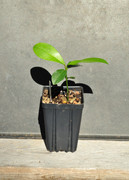
Garcinia macrophylla (Pungara/Bacuripari) 1 4 tall under 1 year $50 SOLDPurchased from a fellow Tropical Fruit Forum member.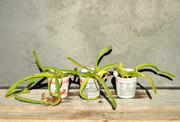 Hylocereus megalanthus
Hylocereus megalanthus (Yellow Dragon Fruit)
3 8-11 long 2 years $8
Seeds from a commercial variety of Yellow Dragon Fruit.
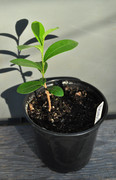
Manilkara triflora 1 5 tall over 1 year $55 SOLDPurchased from a Tropical Fruit Forum member.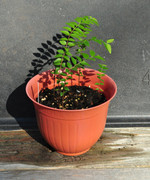
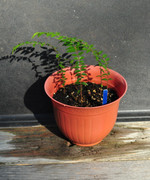 Myrciaria floribunda
Myrciaria floribunda (Rumberry/Guavaberry) Group Pot
5 plants in 1 pot 2"-6" tall Sold as a Group $60
Myrciaria floribunda seeds are notorious for having a poor germination rate, something that has been discussed on this Forum by myself and others. When I purchased these seeds from a fellow Forum member in late 2020, a few came up quickly that winter and a few more came up gradually in the spring and summer of 2021. Most of them, about a dozen seeds, did absolutely nothing, so I took them out of their seed starting tray and placed them in this group pot. I kept it watered but generally paid no attention to it. In the fall and winter of 2022, four seeds germinated, and at the end of April of this year, a fifth seed germinated. Over two years after first being planted! So, this pot contains those five plants plus all the other seeds I threw in there in 2021 (6 to 9 ungerminated seeds) which may or may not still be viable. It goes to show that you should never give up on Myrciaria floribunda seeds. I ended up with a decent germination rate after all; it just took over two years.
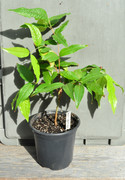
Plinia aureana (White Jaboticaba) 1 10 tall 2 years $20 SOLDPurchased from a Tropical Fruit Forum member.
Plinia coronata (Restinga Jaboticaba) 1 14 tall 2 years $40 SOLDPurchased from a Tropical Fruit Forum member.
Plinia hybrid (Scarlet/Escarlate Jaboticaba) 1 6 tall 1 year $15 SOLDPurchased from a Tropical Fruit Forum member.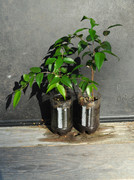
Plinia rivularis (Guaporeti) 1 (plant on the left in the photo) 7 tall 2 years $20 SOLDPurchased from a reputable eBay seller. Due to a lack of rain in my area, I had to water them with city water for a while. That caused tip burn to the leaves. The new growth does not have that issue since I have been able to resume watering them with rainwater.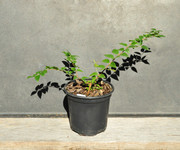
Plinia sp. (Jaboticaba Lujαn) 1 10 long (longest branch, low spreading growth as pictured) 1 year $40 SOLDPurchased from a Tropical Fruit Forum member. Psidium guajava
Psidium guajava (Patillo Guava)
7 6 11-29 tall 2 years $10
Purchased from Trade Winds Fruit. The taller ones will require an extra oversized shipping charge or pruning to get under that charge, buyers choice.
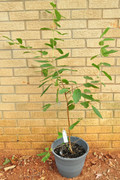 Psidium guineense
Psidium guineense (Brazilian Guava)
1 45 tall 2 years $50
Purchased from Trade Winds Fruit. Pot not included. It was repotted a few months ago, so it can be downpotted to save weight. It can also be pruned smaller for a lower shipping charge at the buyers request.
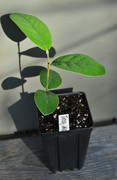 Tapura amazonica
Tapura amazonica
1 5 tall under 1 year $40
Purchased from a Tropical Fruit Forum member.




















